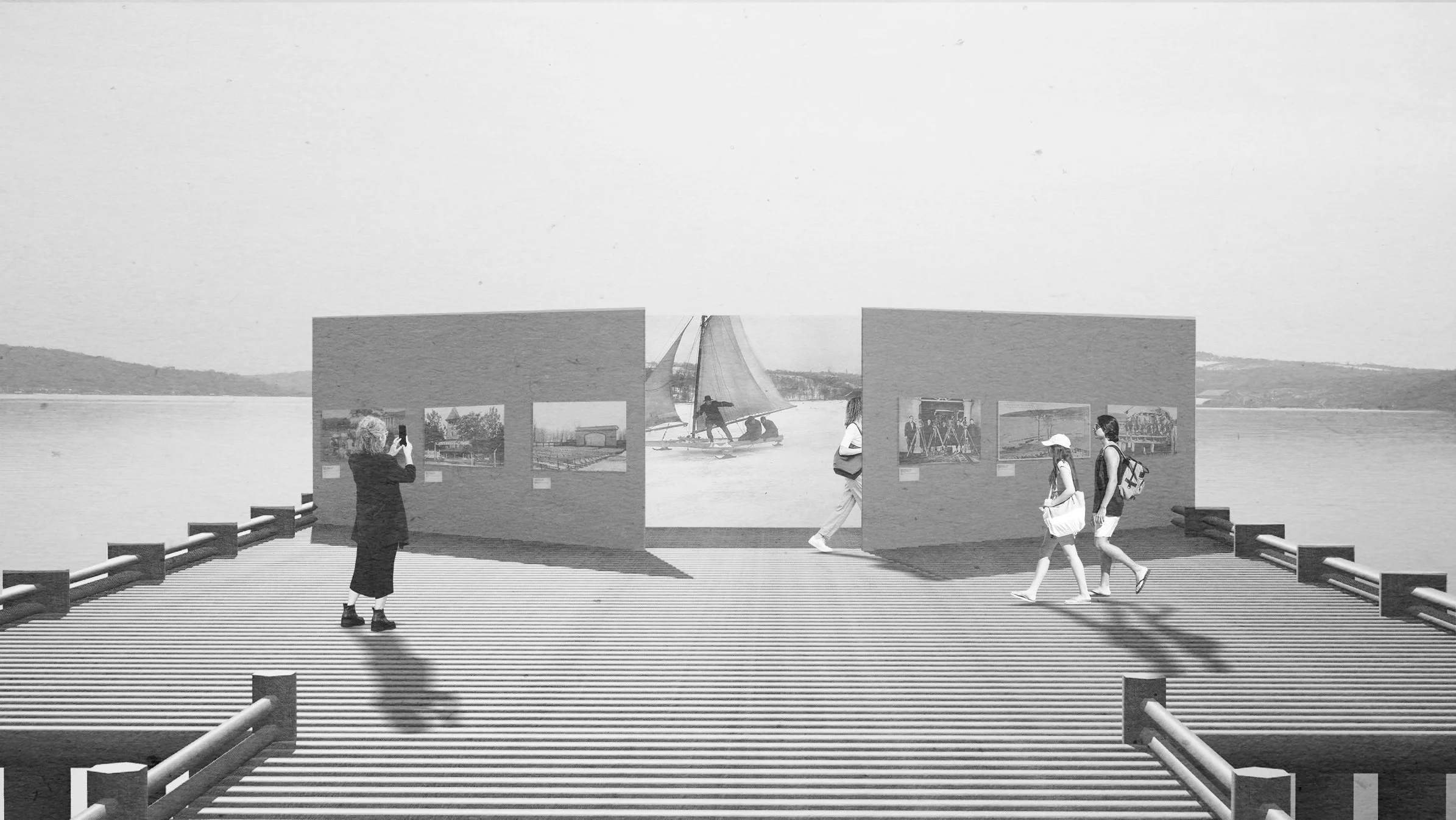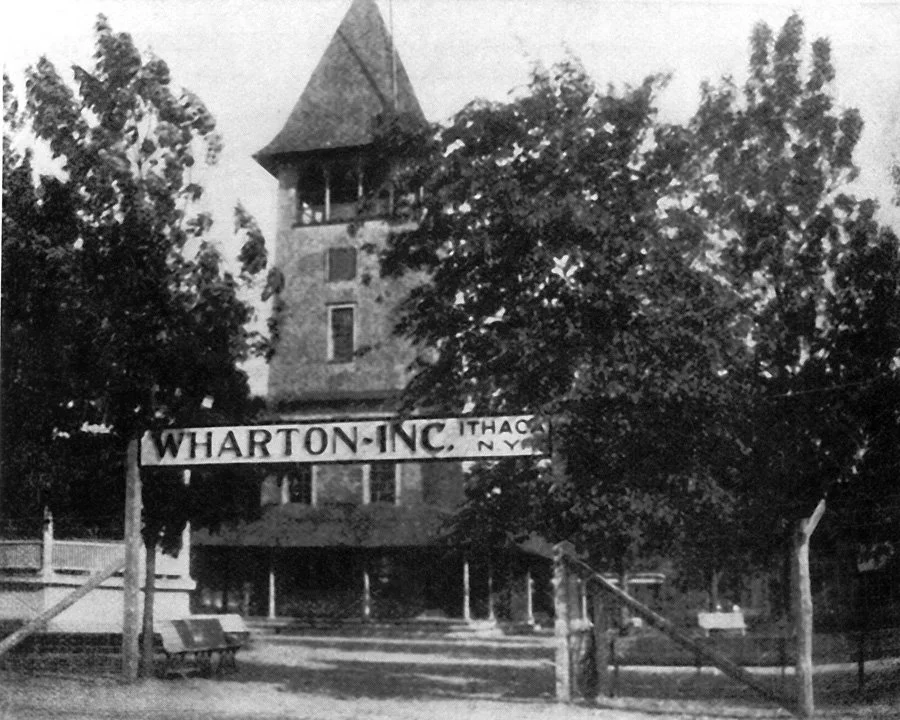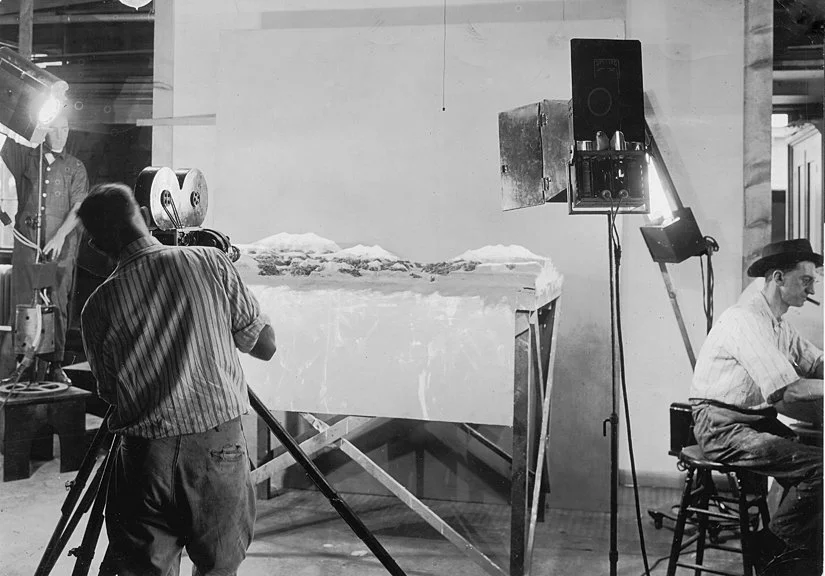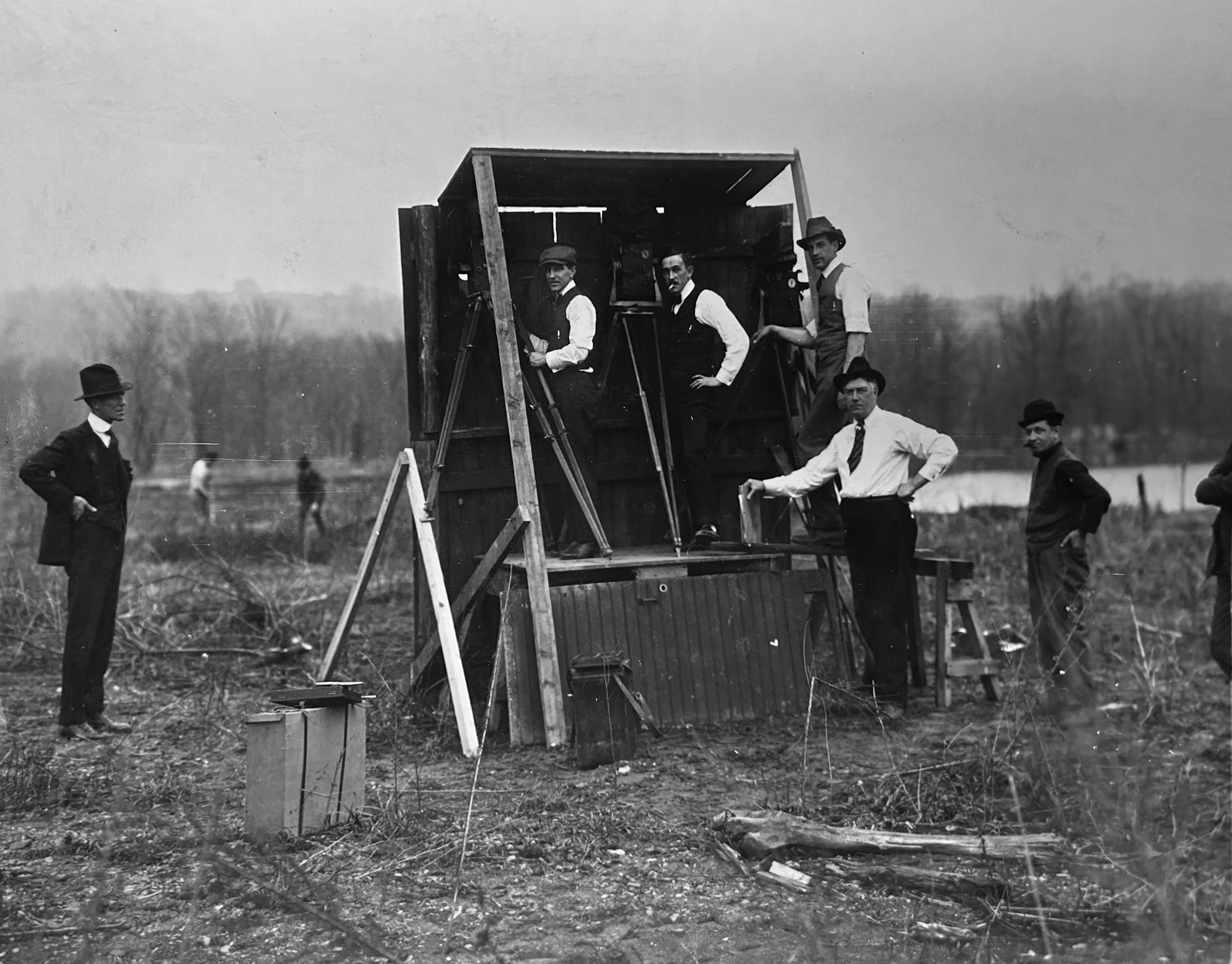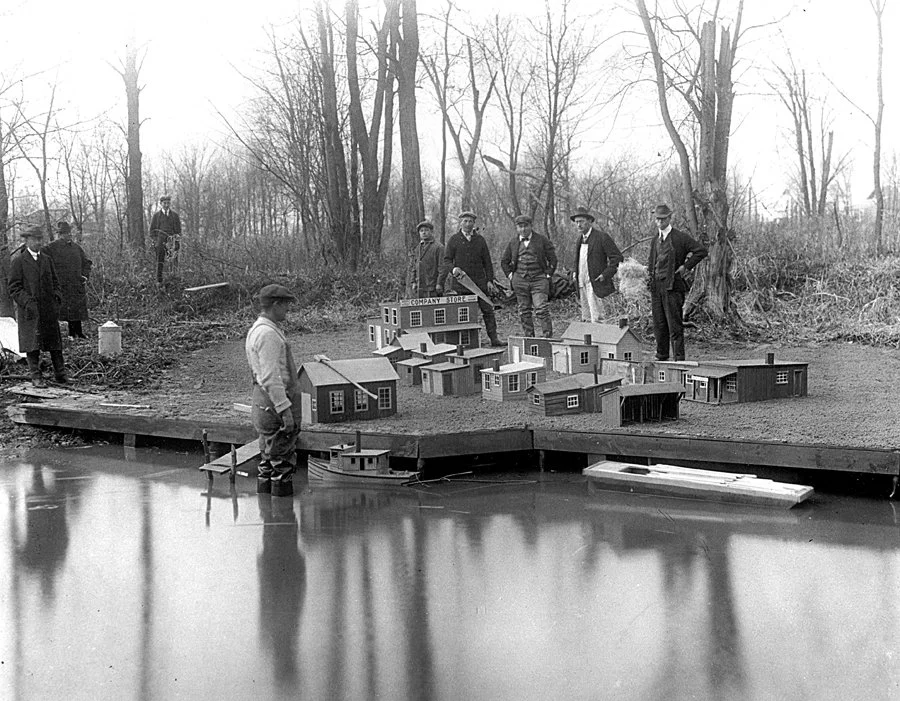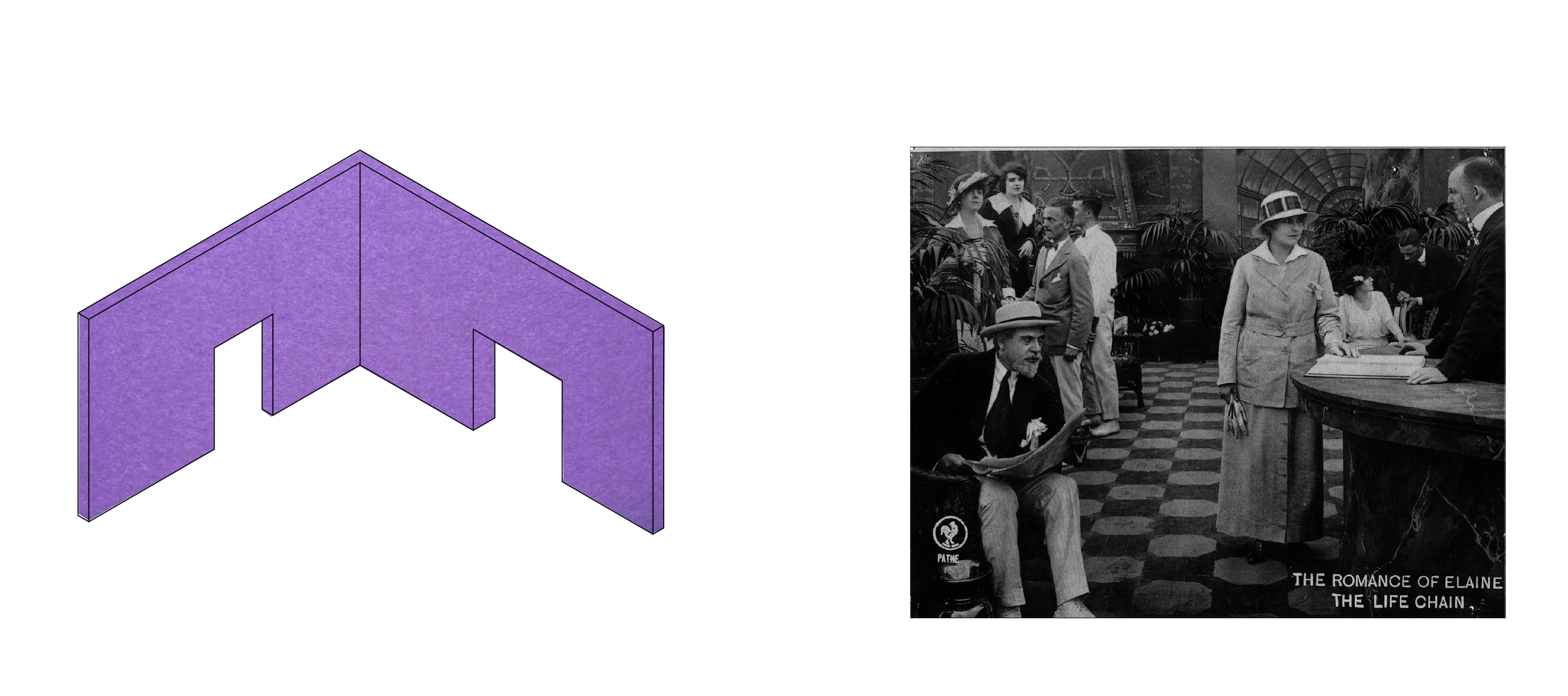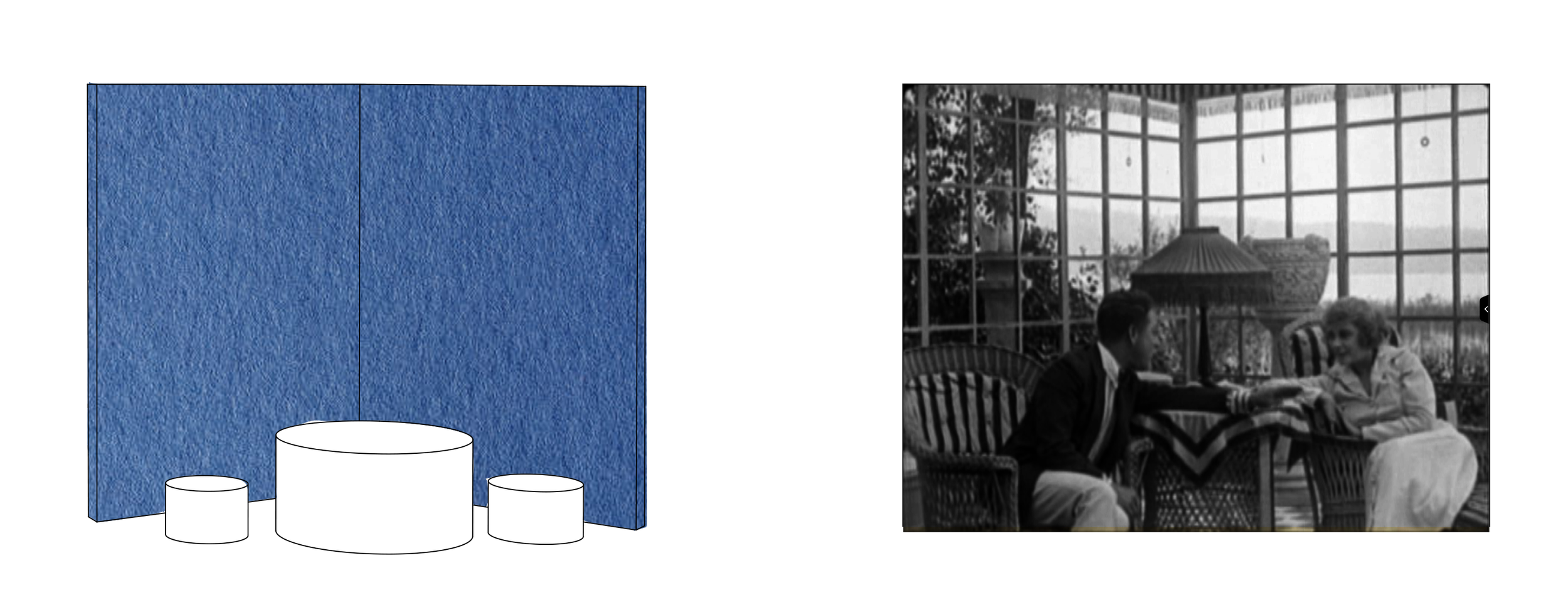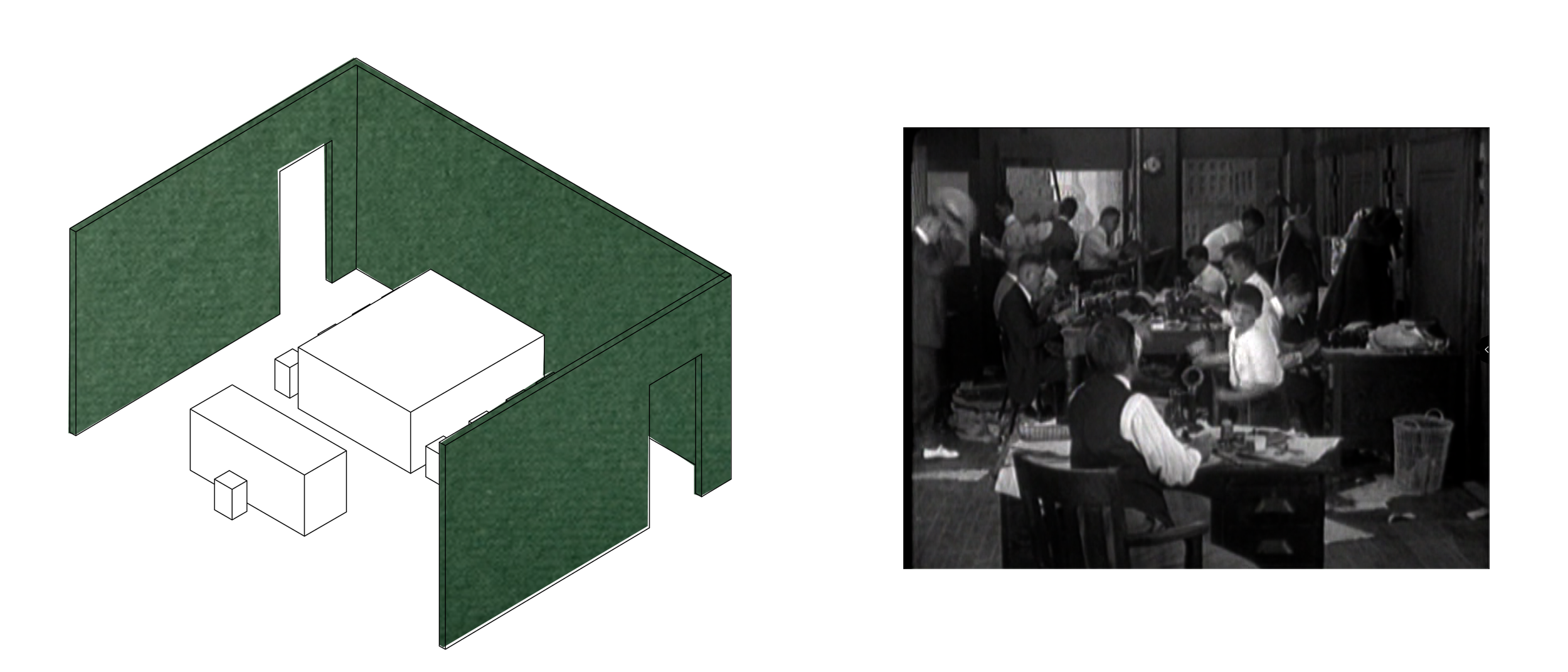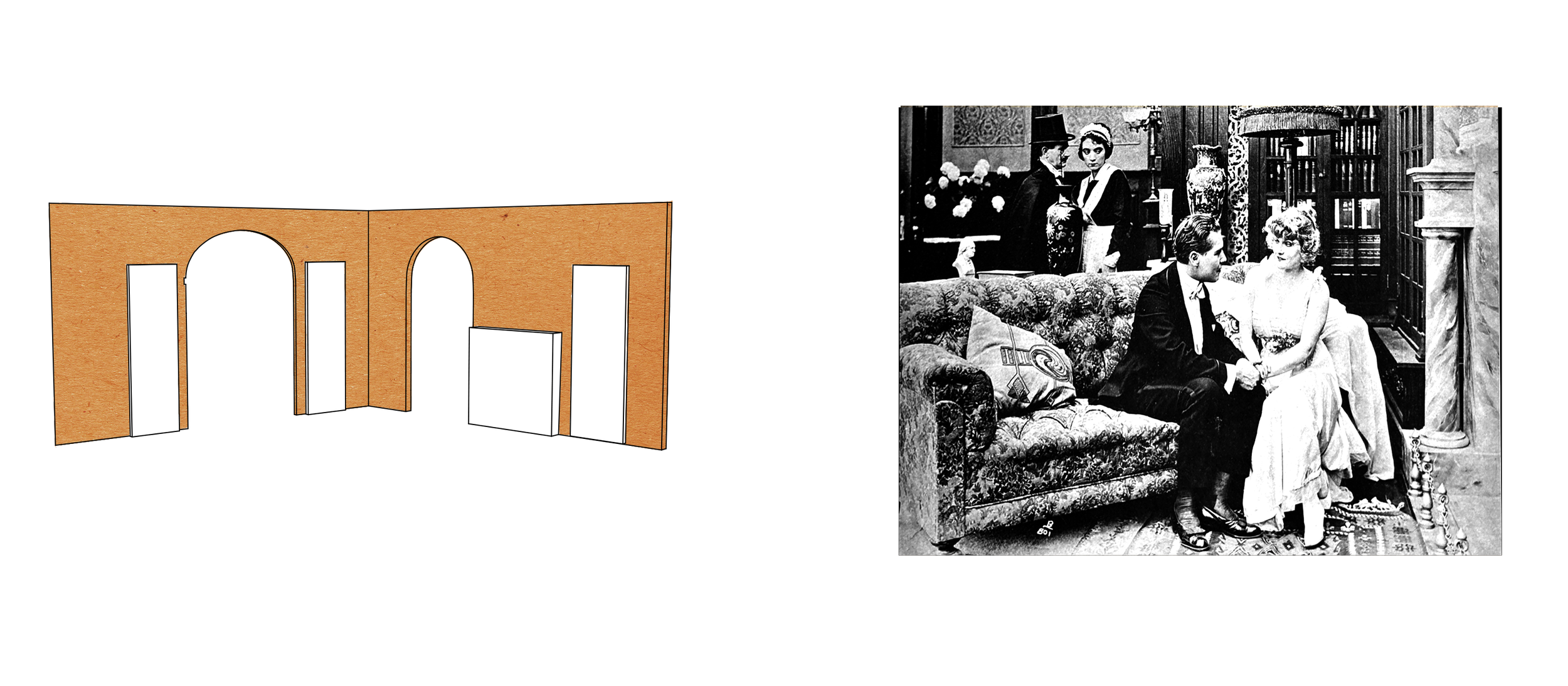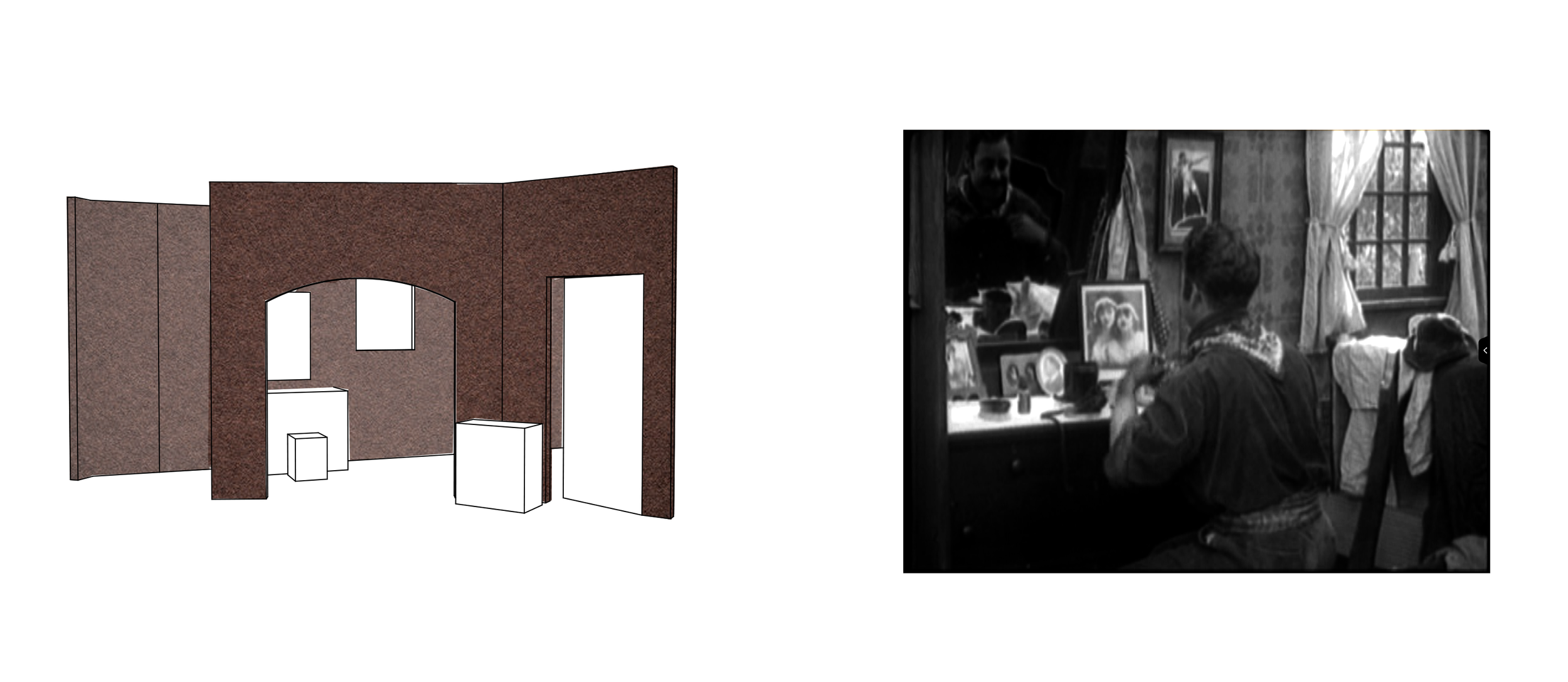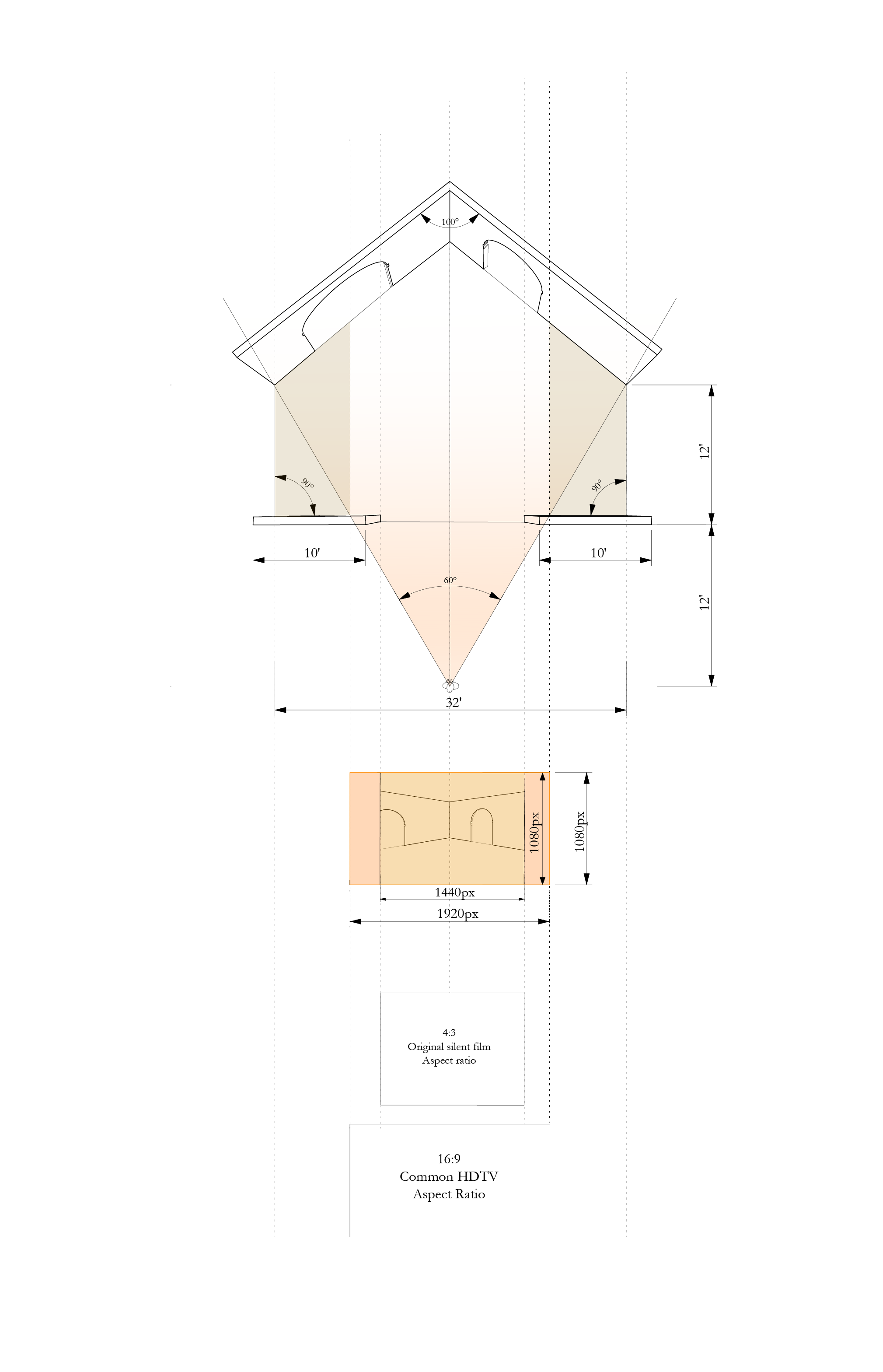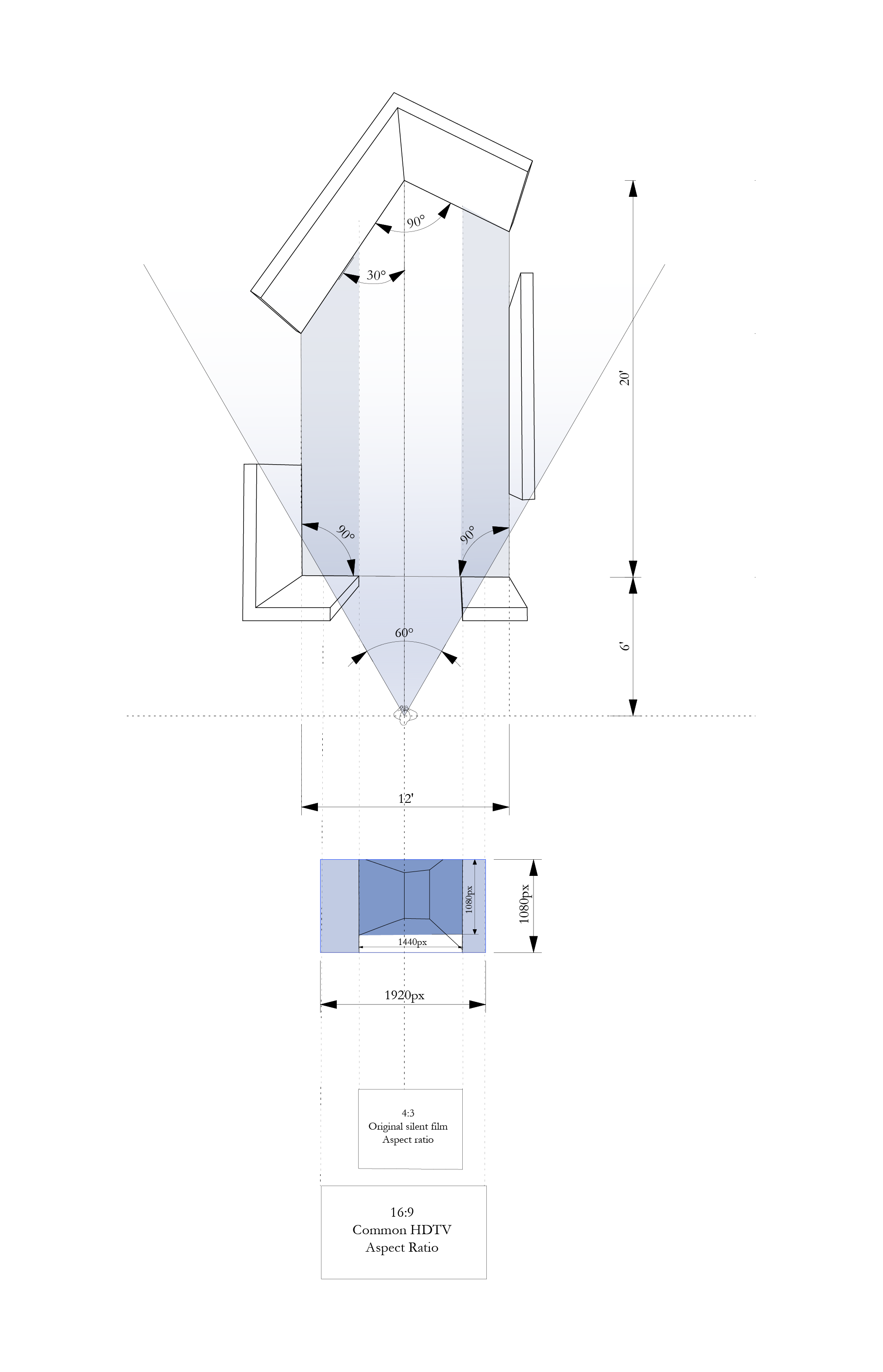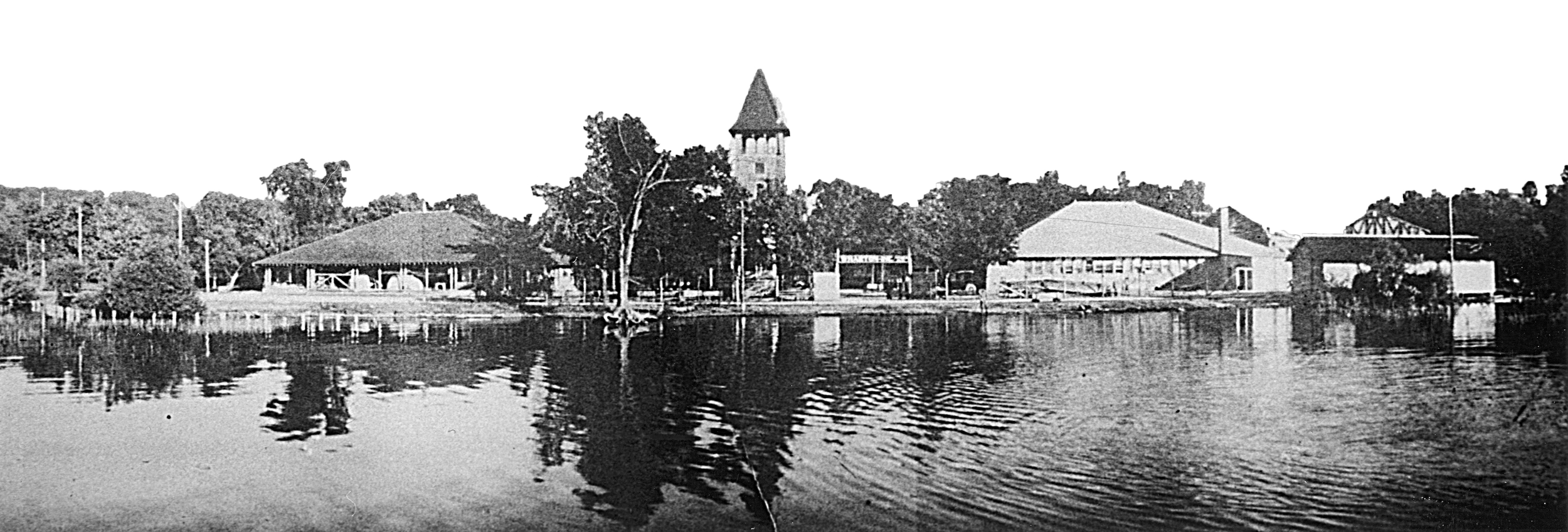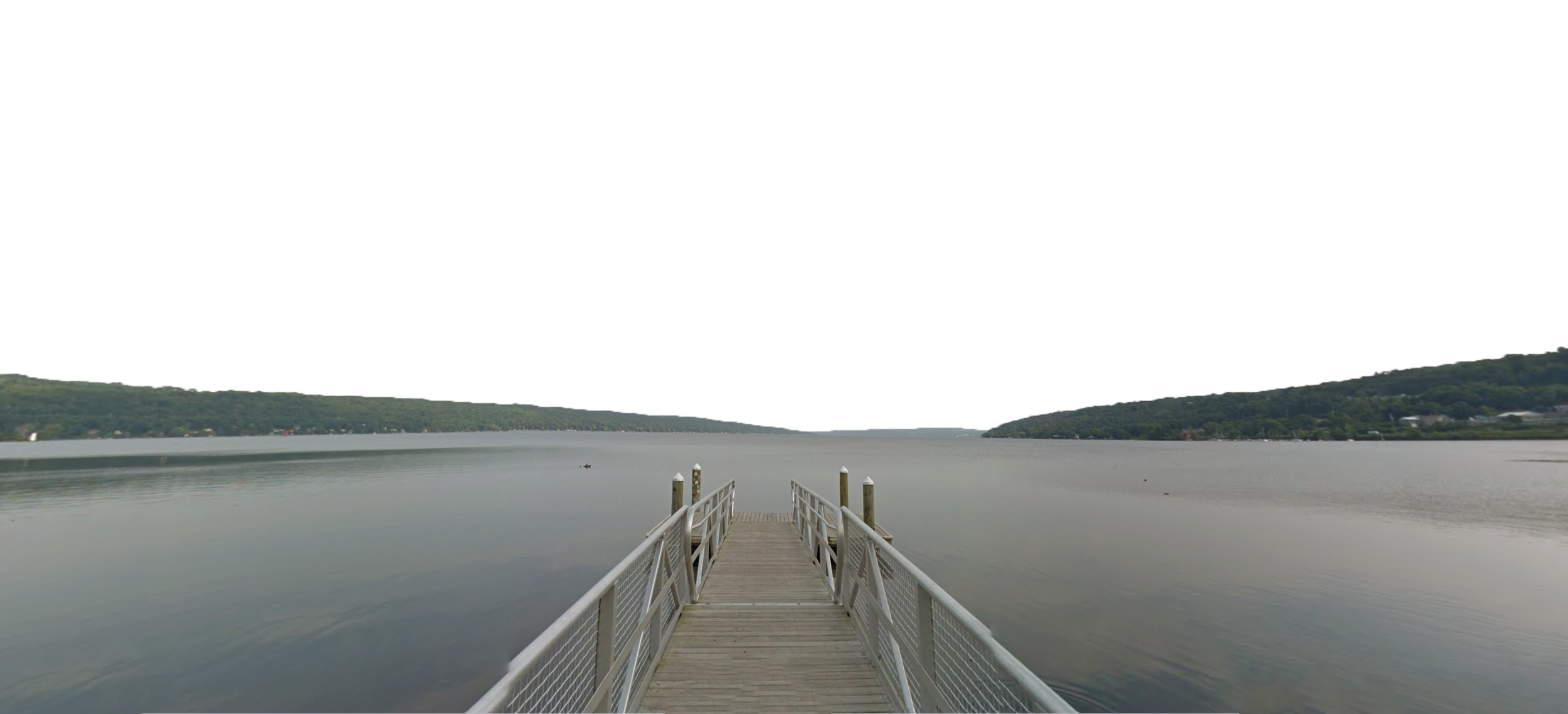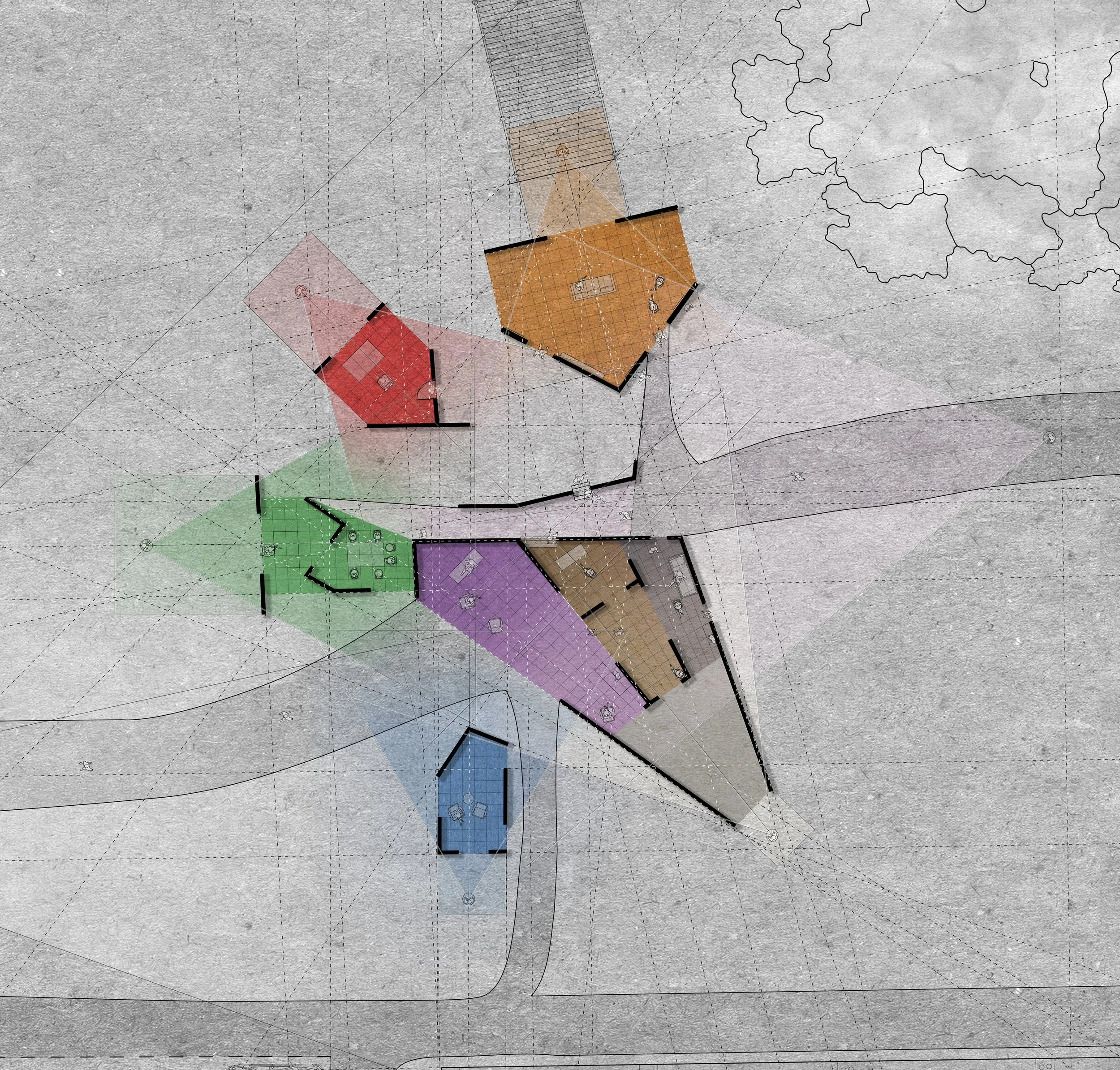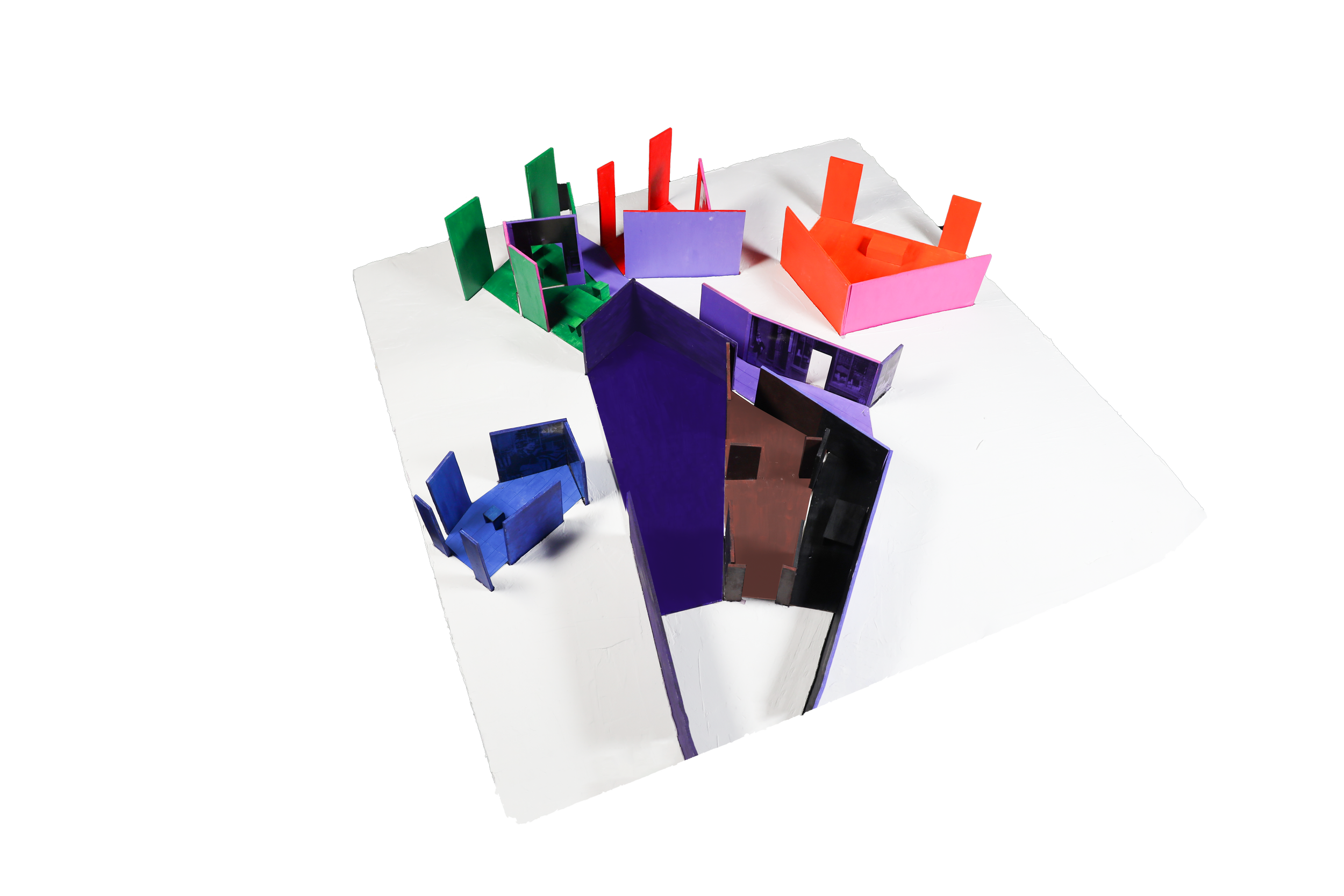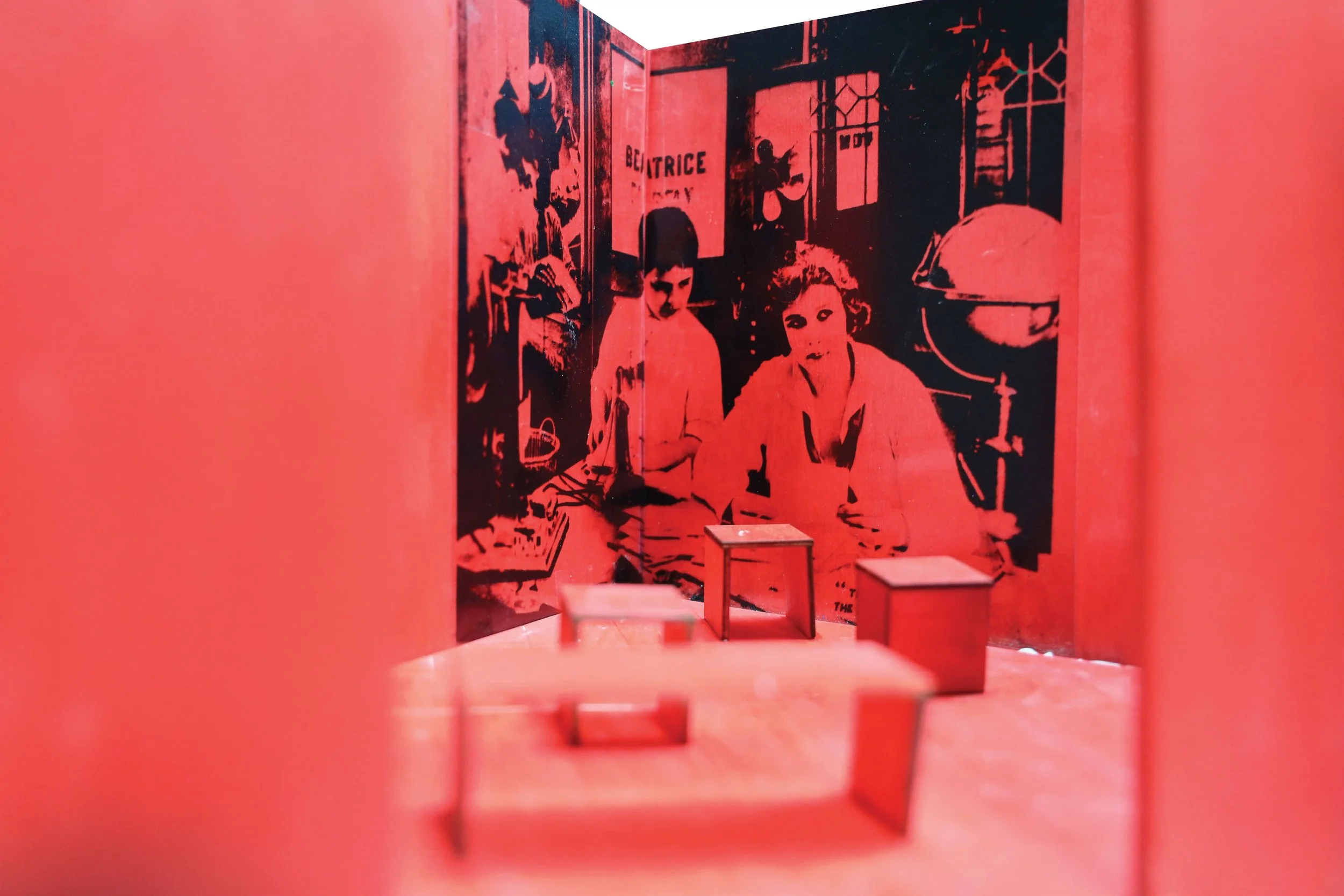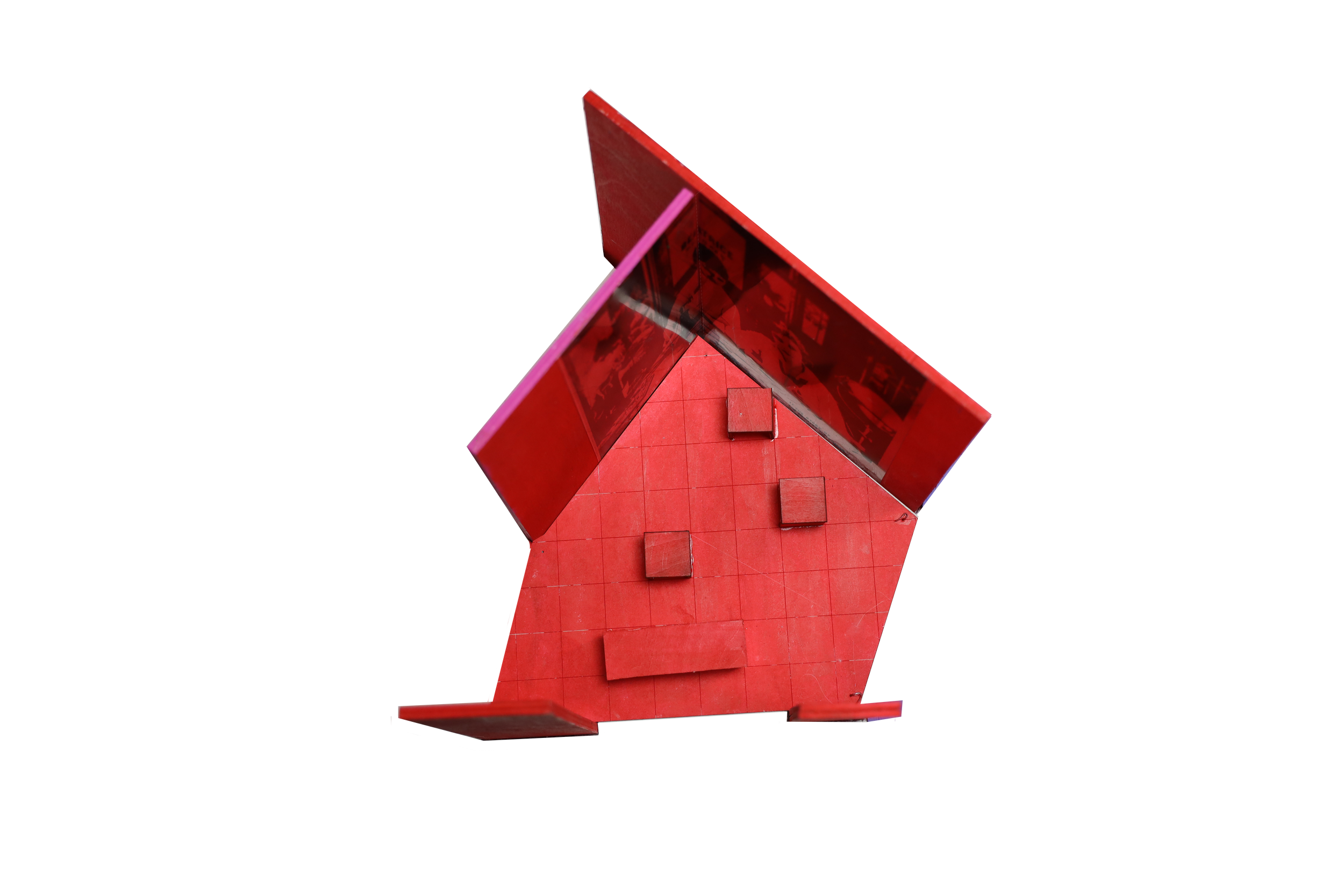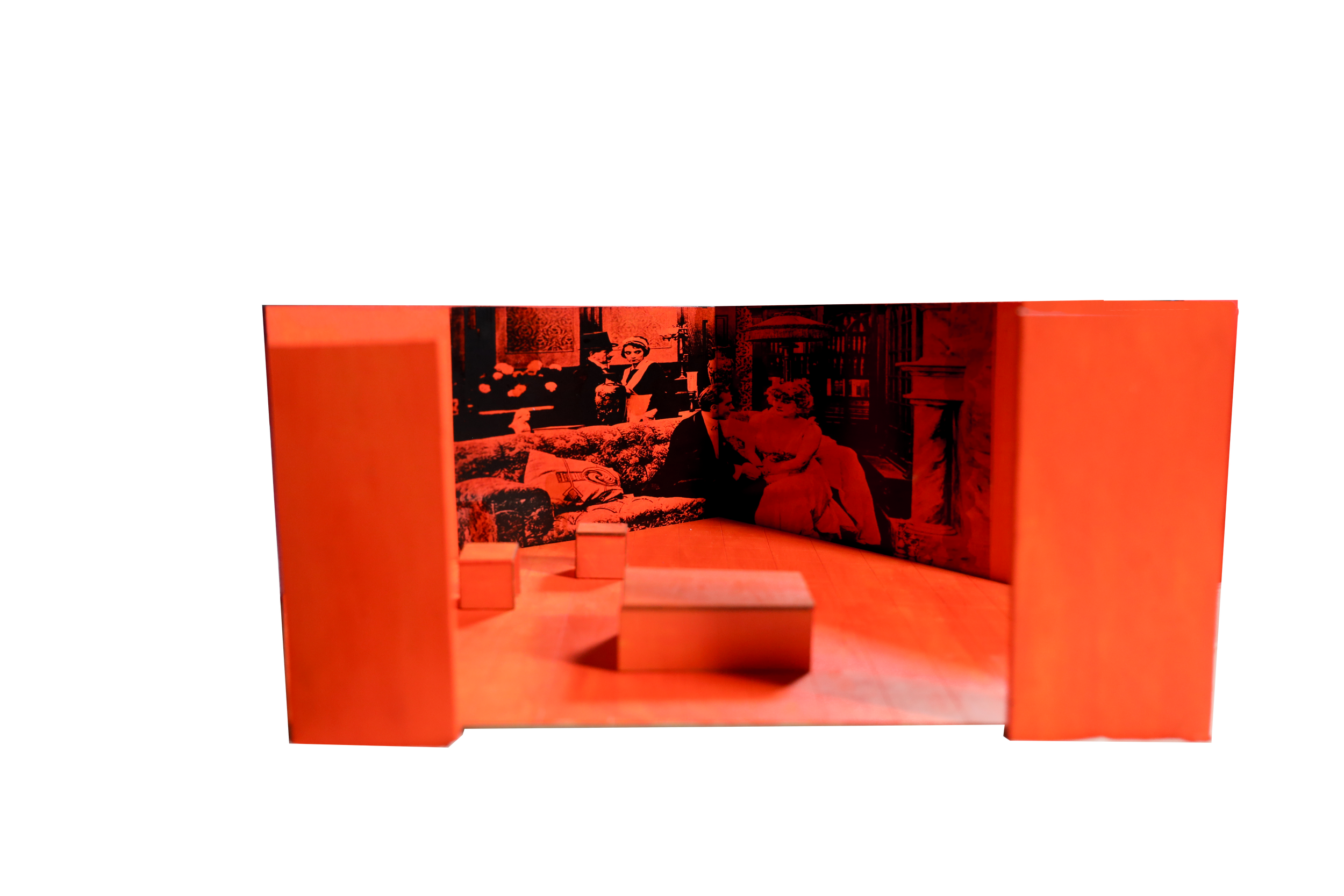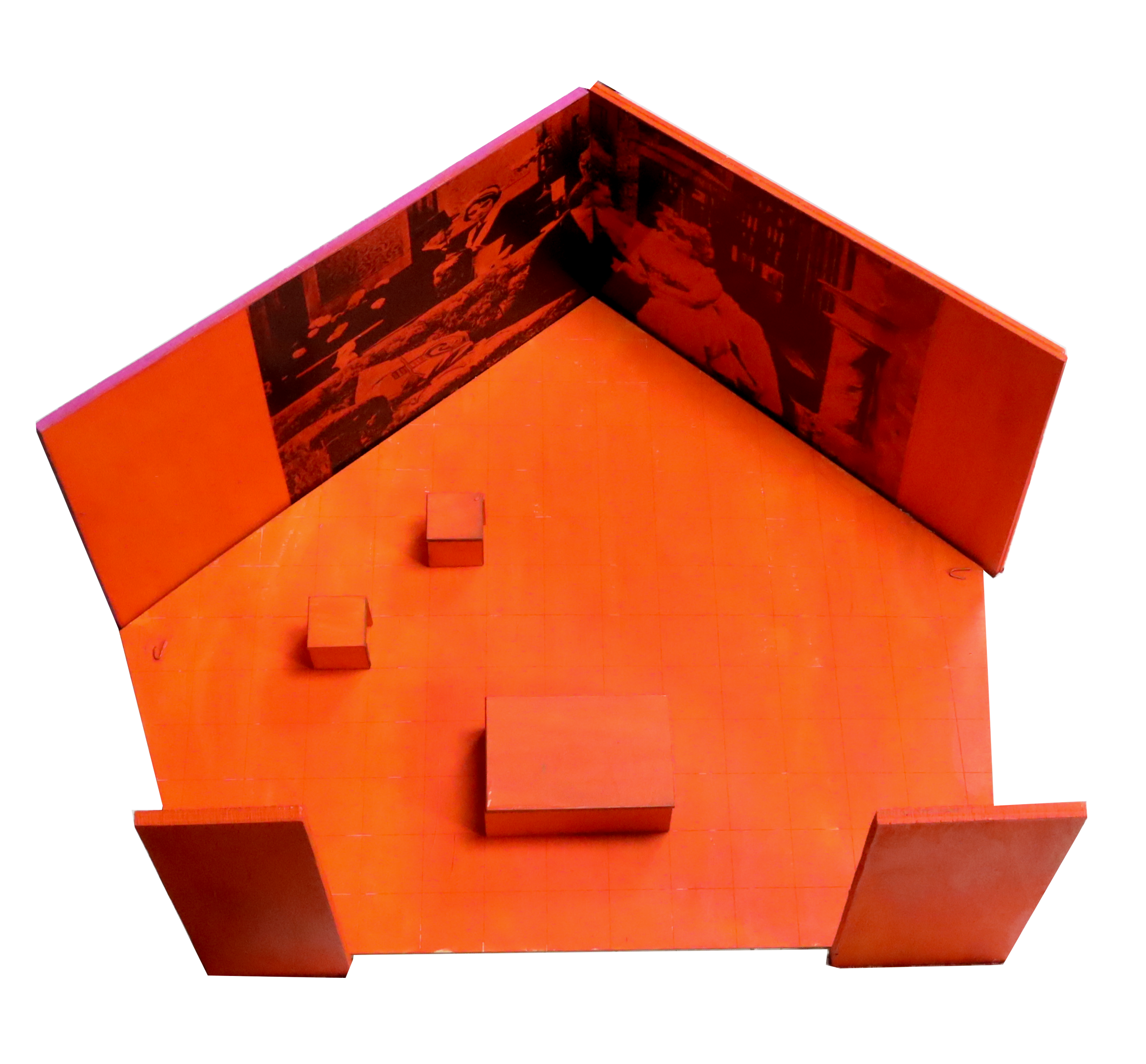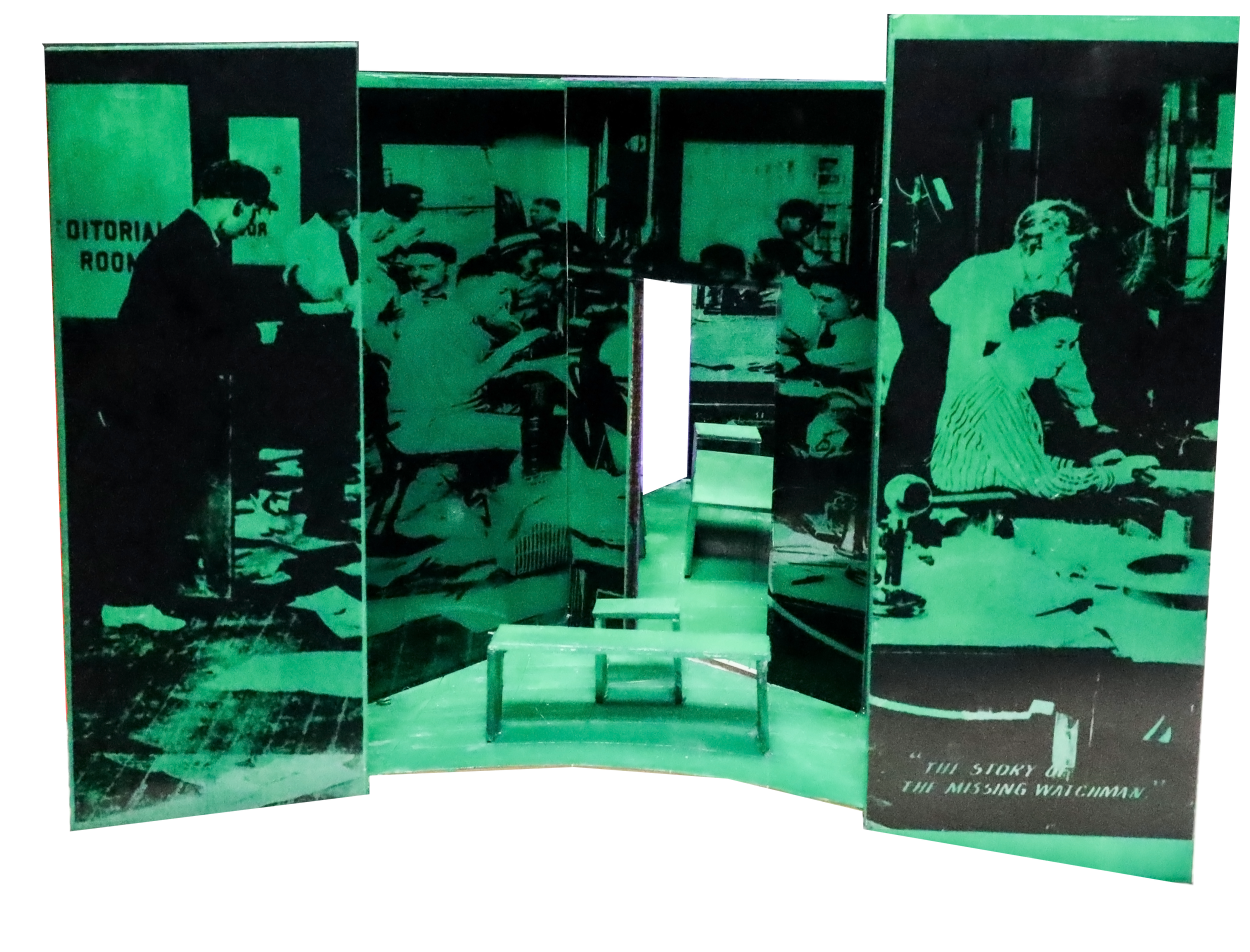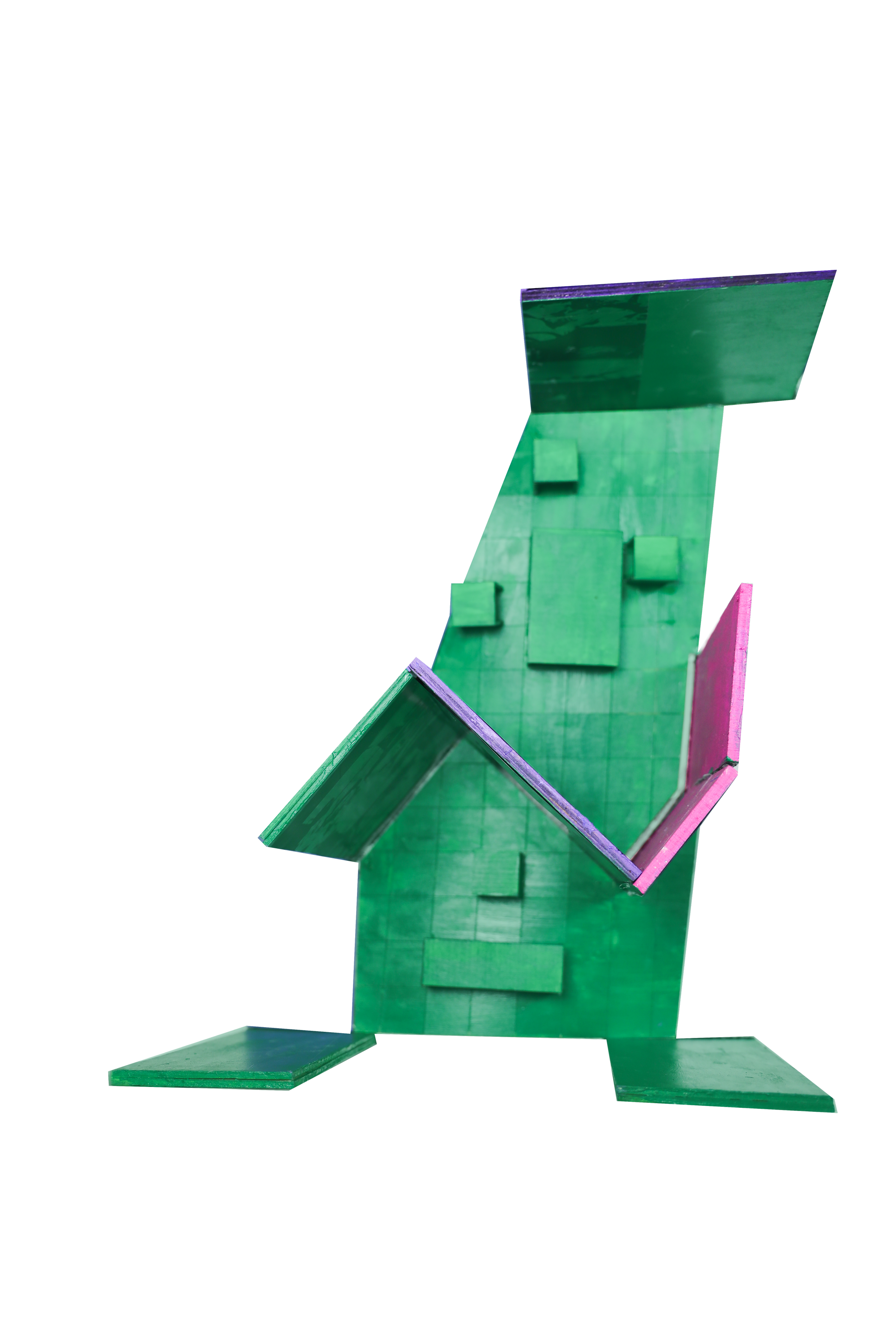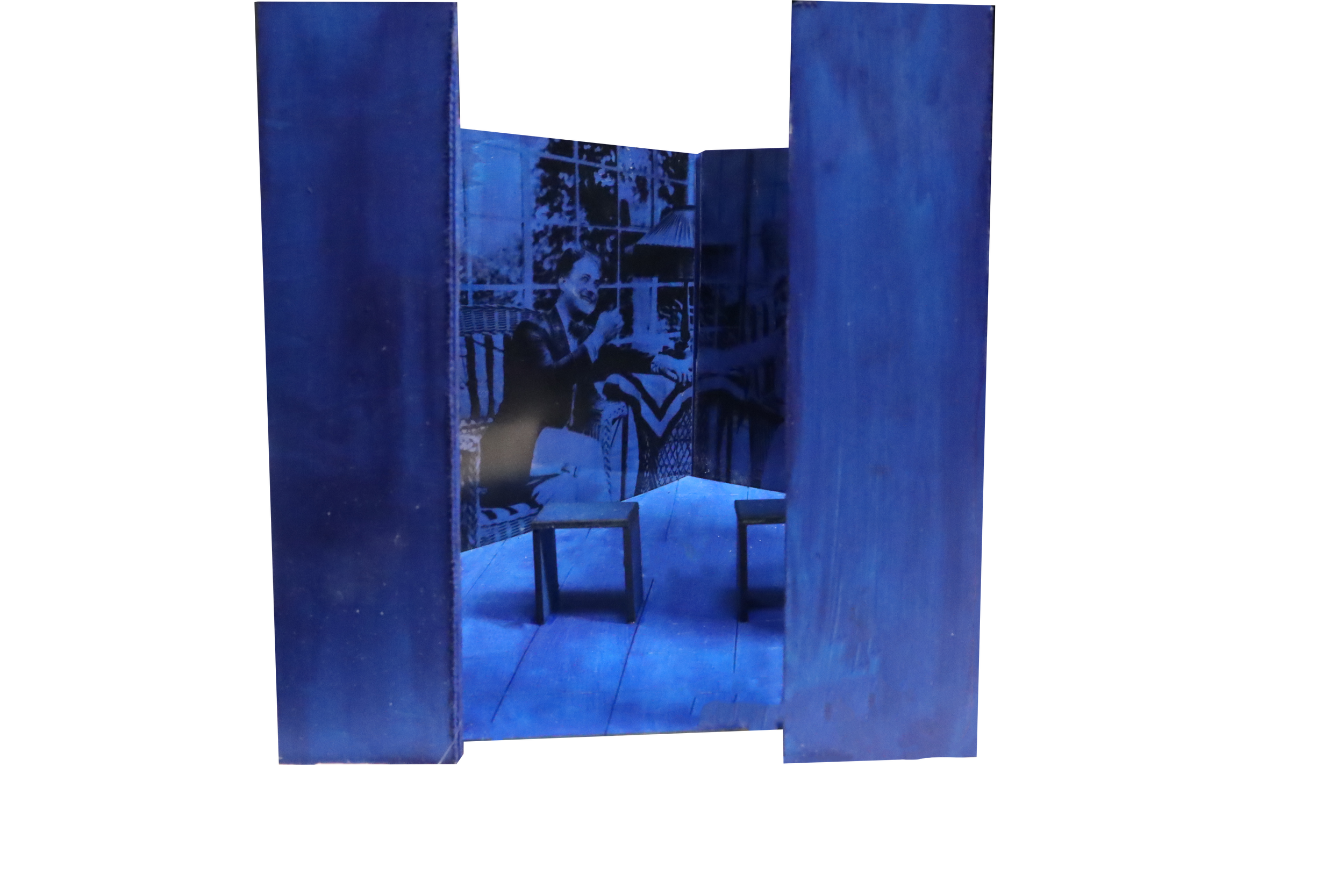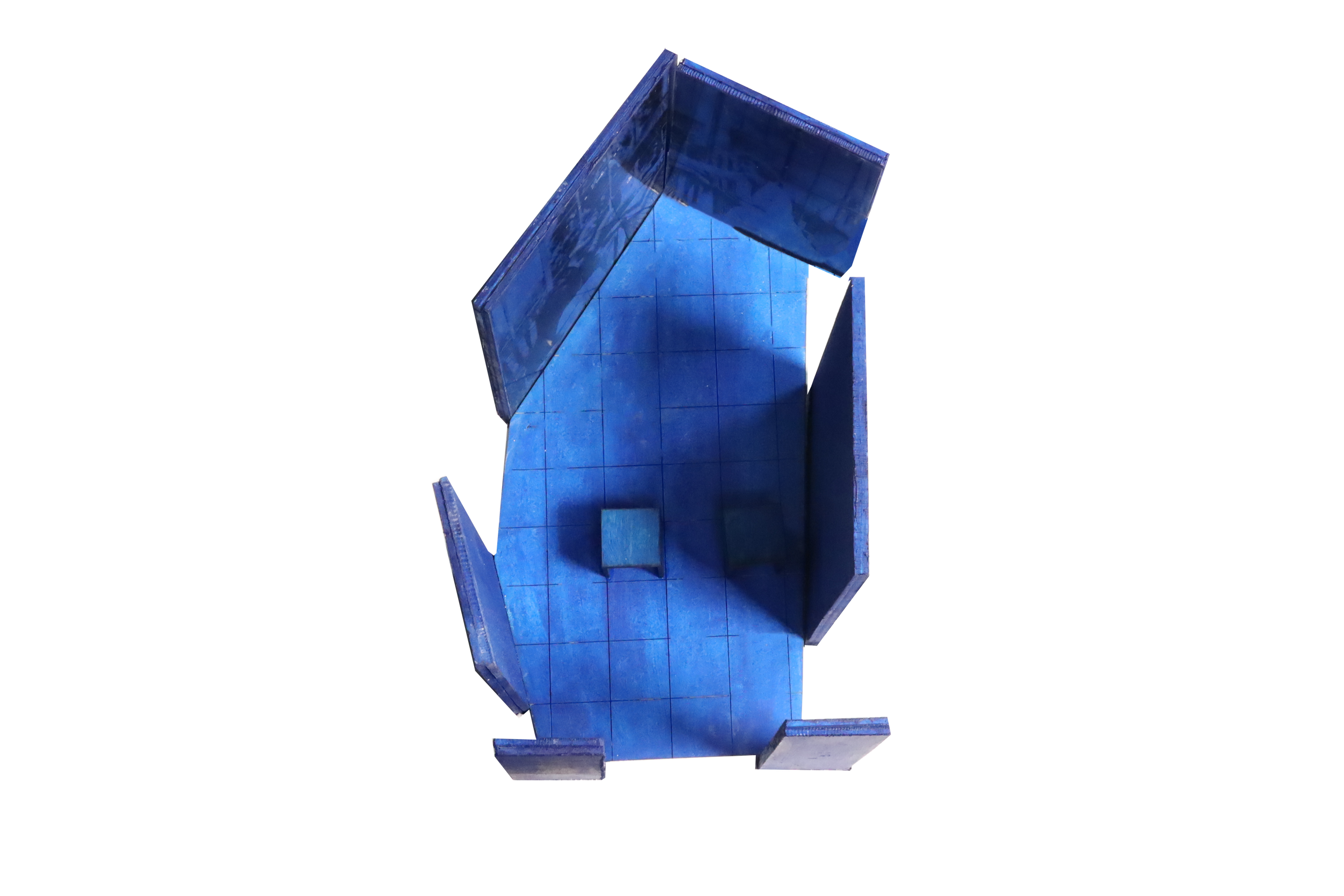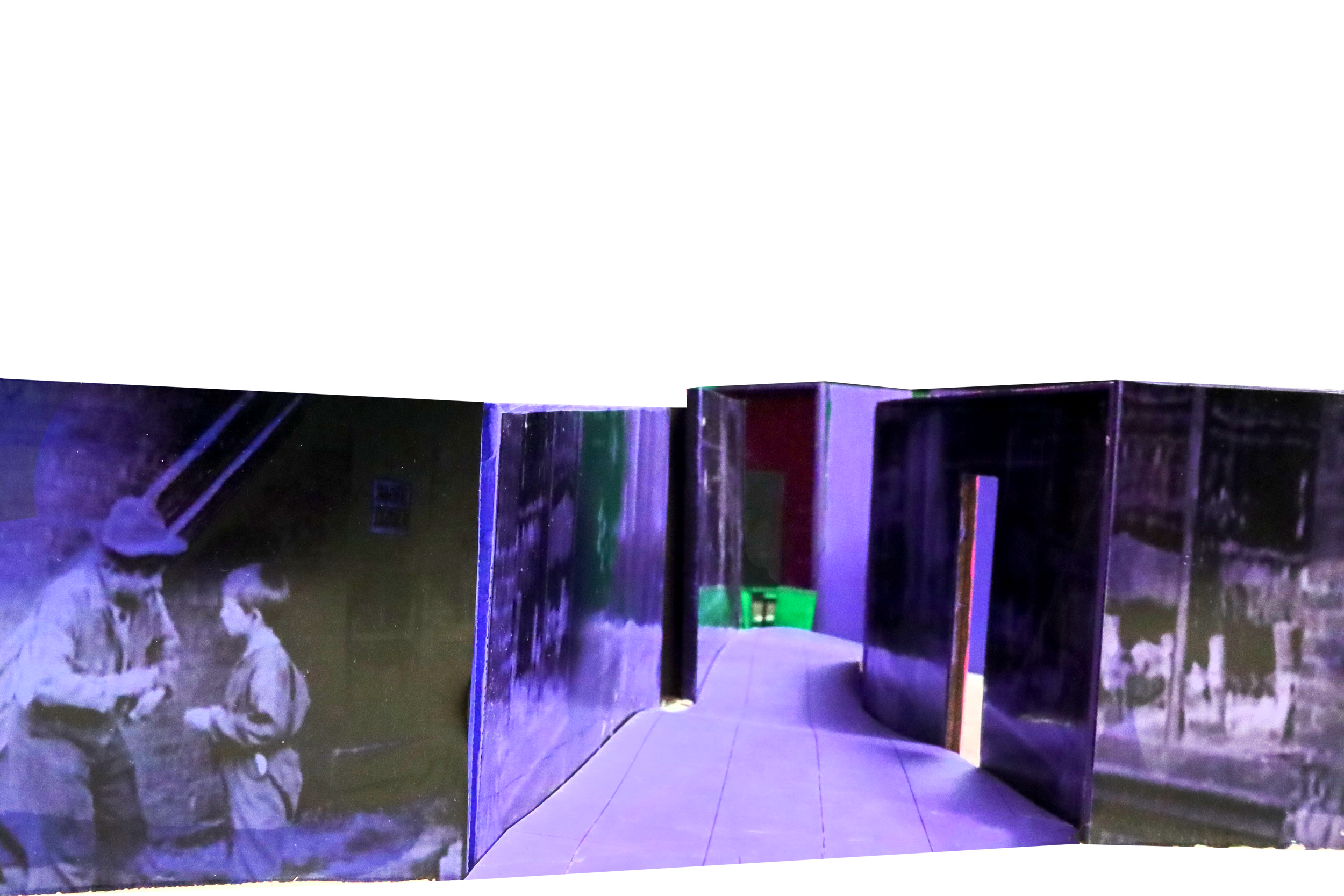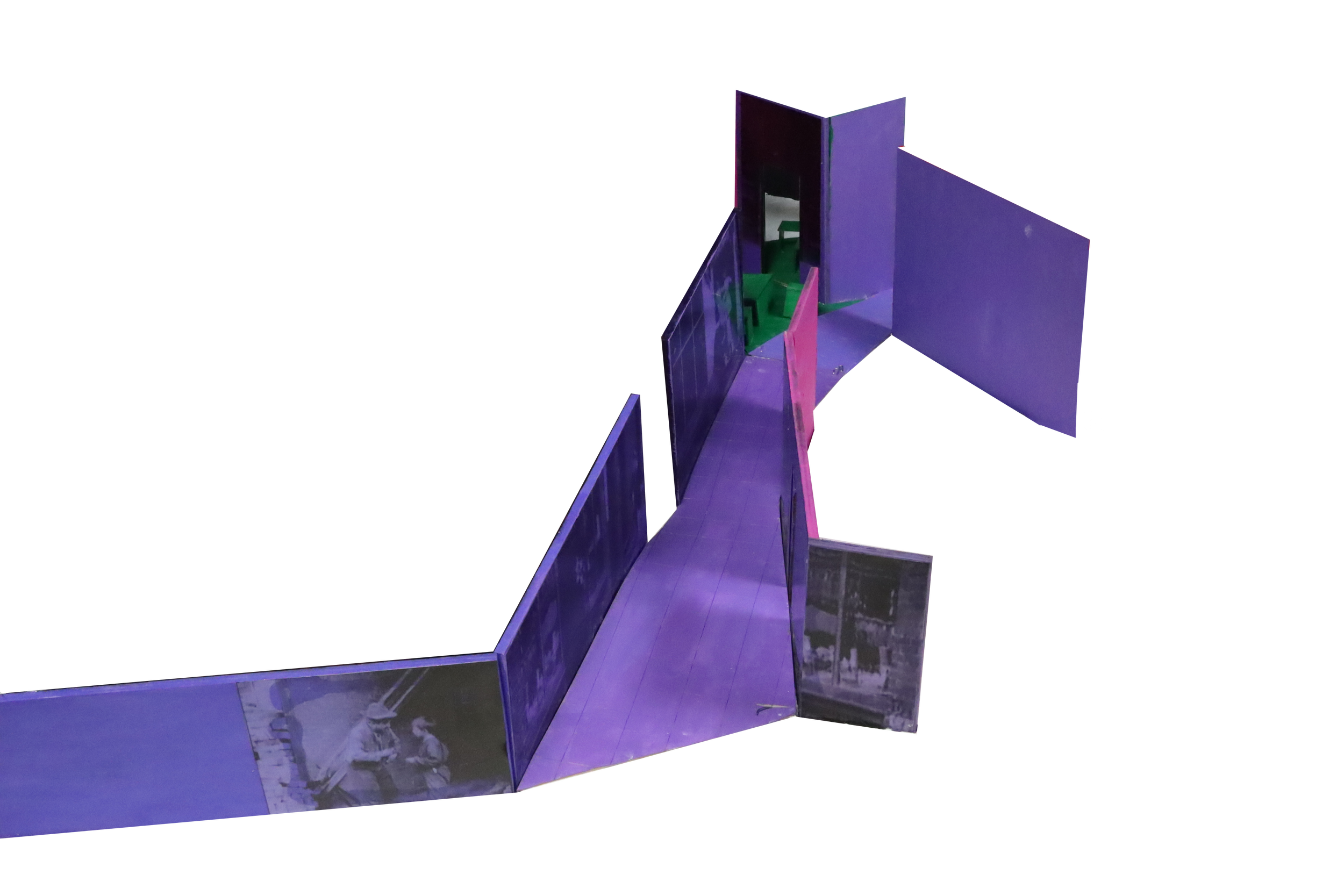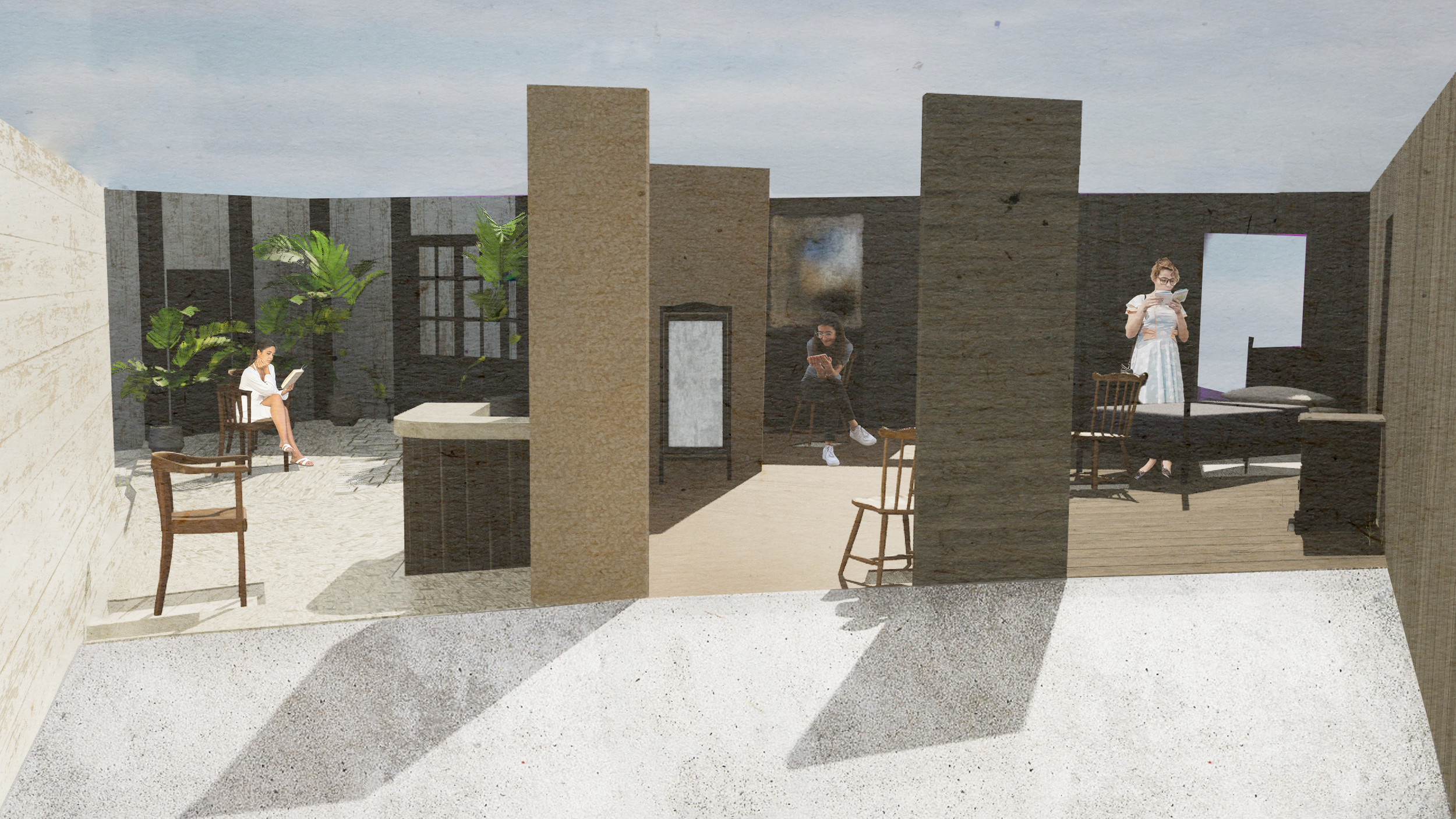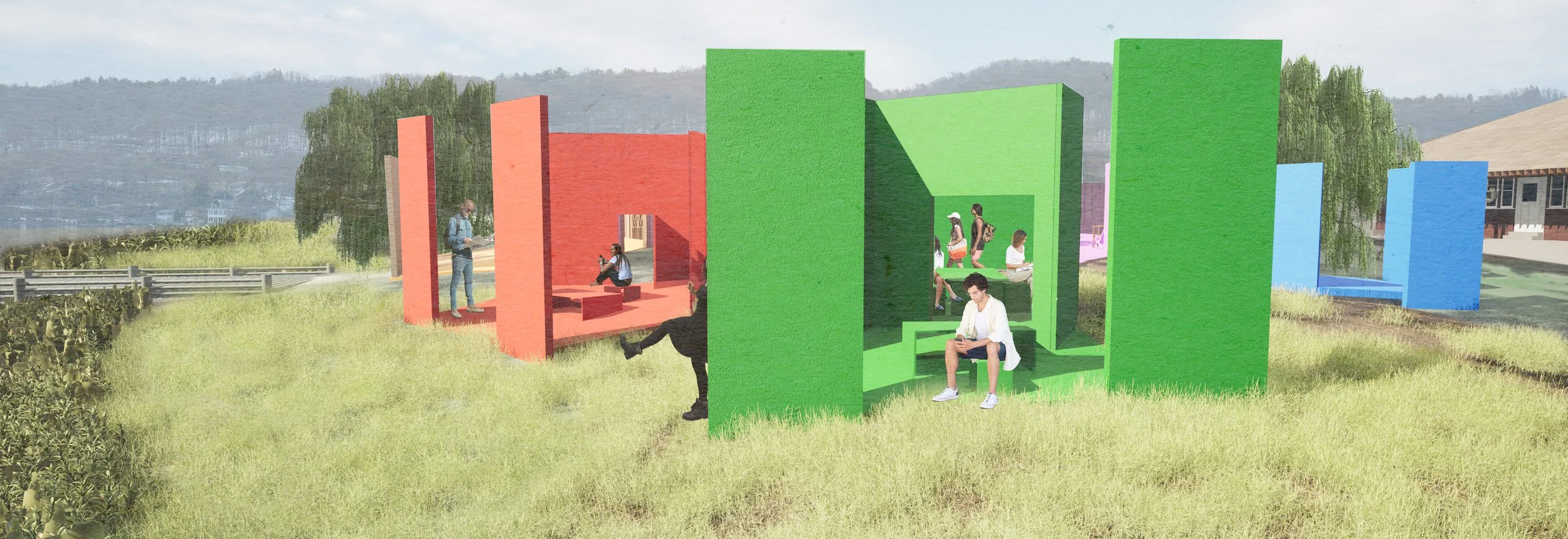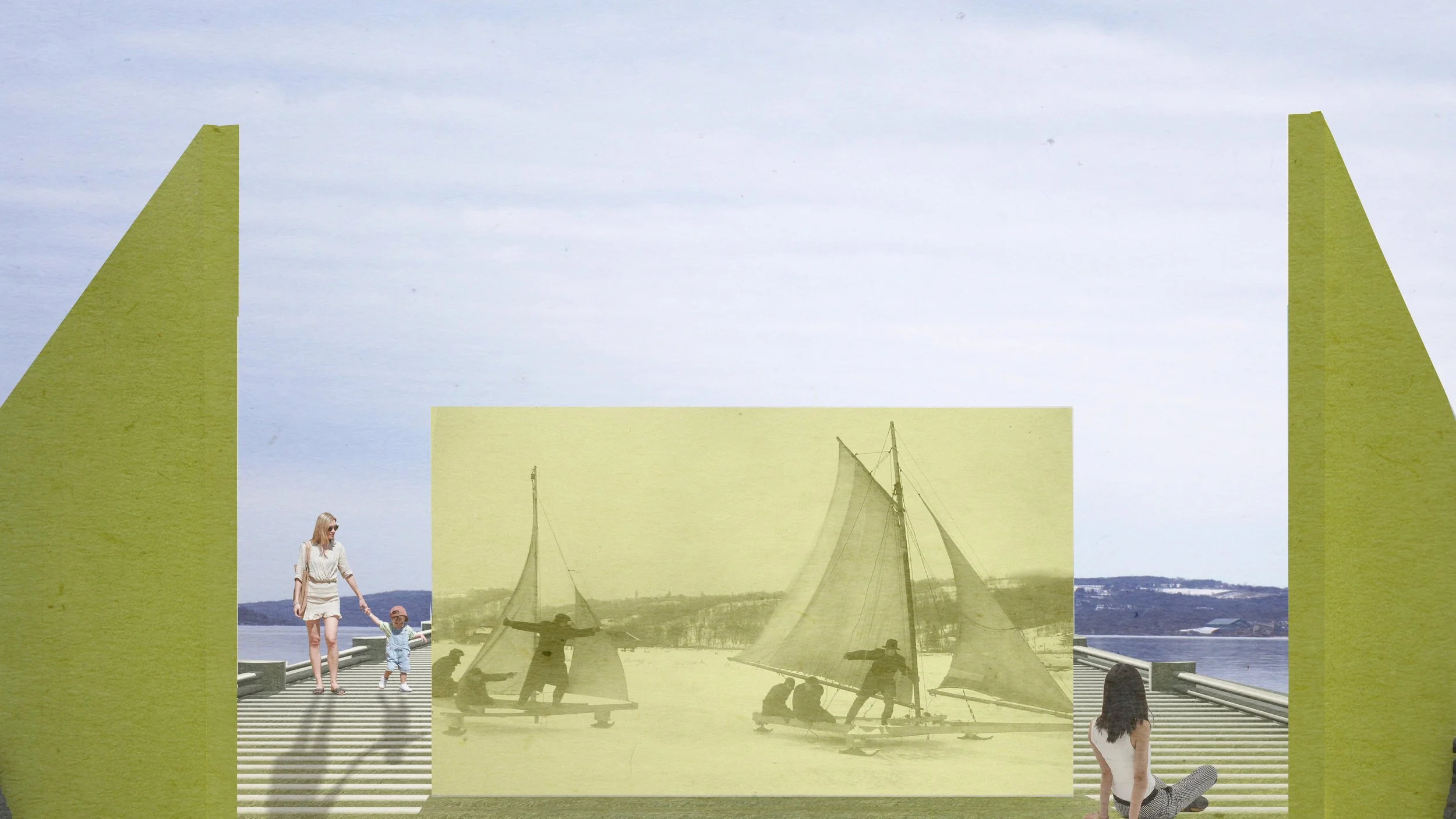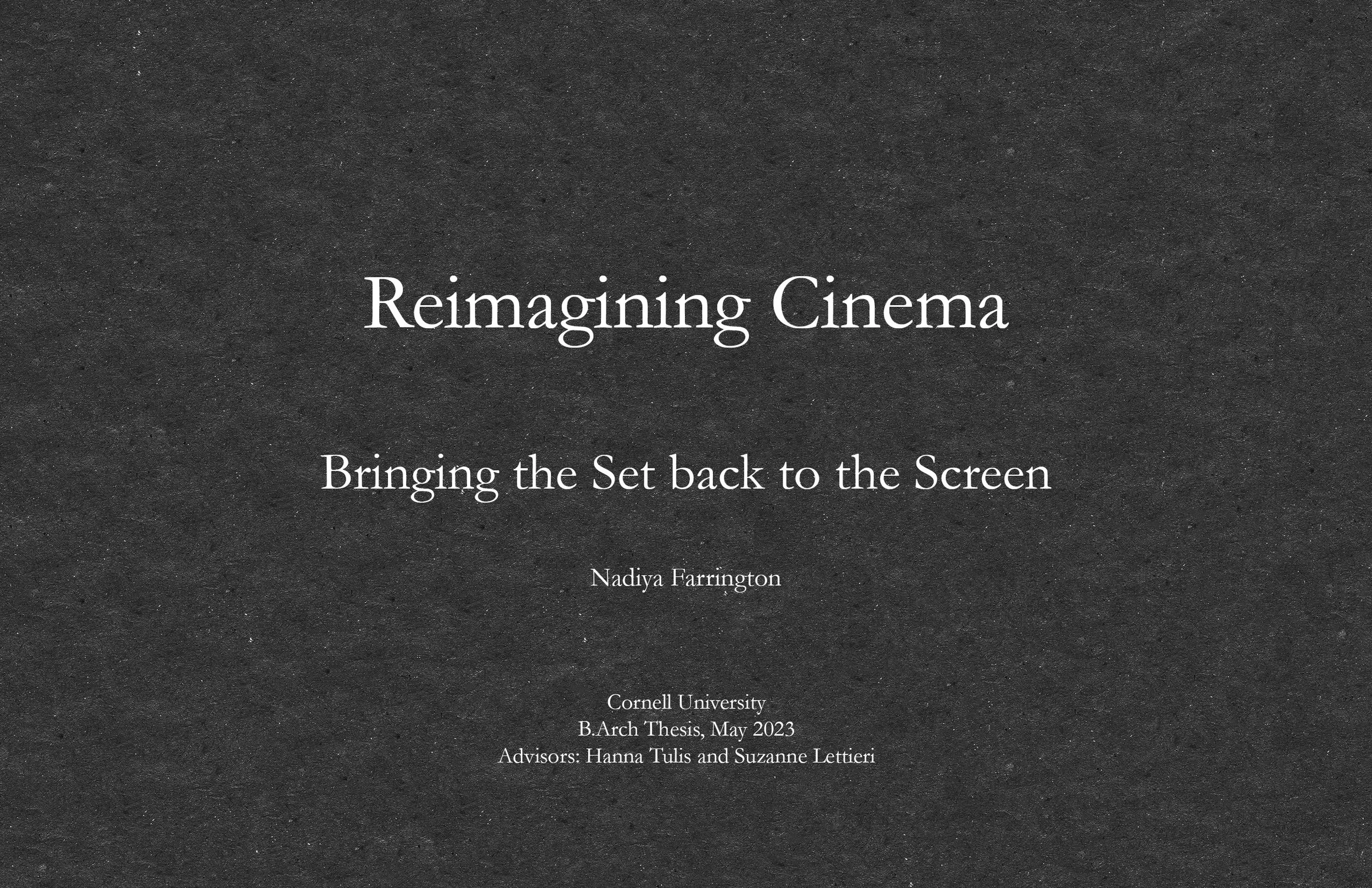
REIMAGINING CINEMA
Bringing the Set Back to the Screen
Thesis by Nadiya Farrington
Advisors: Hanna Tulis and Suzanne Lettieri
Given the decline of movie theater attendance, how can we reimagine the cinema experience to increase and encourage audience engagement? How can the history of filmmaking reveal the necessary devices to increase participation and appreciation of films?
Throughout the rise of cinema and cinema technology, the way the audience has engaged with the theater has evolved as well. Growing from live theater to short snippets of moving pictures accompanying live performances in vaudeville theaters, to feature films being streamed from our laptops in the comfort of our homes, we as the audience have grown farther from the stages that movies were once screened and filmed on.
With the rise of streaming services, the attendance in traditional movie theaters has declined, decreasing the opportunities for audience members to participate in the joint spectatorship and experience films together.
This has led me to ask the question, how do we make film more three dimensional and decrease the distance between the audience and the world of the film? This thesis explores how to reimagine cinema by reincorporating the theatrical “stage” back into the film watching experience. Doing this requires studying and understanding how the theater stage transferred into the film set and led to evolution of many filmmaking techniques.
When studying the history of filmmaking and early cinema, I discovered that Ithaca New York was once known as the unofficial capital of the silent film industry. Wharton Studios, established by brothers Theodore and Leopold Wharton, created over 20 silent short films and serials in Ithaca from the years 1914 - 1920. The brothers were drawn to Ithaca because of the beauty and natural scenery of the area.
The studio had indoor and outdoor stages, a special effects studio, set and props departments, and an open air theater to present plays movies, and vaudeville entertainment. Their films used both built sets and location shooting within Ithaca.

The Wharton Brothers shot films and serials all over Ithaca, using a variety of different filmmaking techniques.
Being a film lover and aspiring filmmaker, my interest drew me to learn about the tools and techniques filmmakers were using at this time to make these silent films. How else did they capture a scene on camera without just shooting on location?
I began researching early filmmaking techniques and learned how through production and set design, filmmakers would create distortions, optical illusions, and tricks of the eye to obtain the desired picture they wanted on screen.
The filmmaking techniques that caught my attention were the Ames room, the Adjoined Room, Matte or glass painting, and the Schufftan Process.

While the Schufftan Process and the glass painting created more visual deception, the ames room and the adjoined rooms used physical space to create more forced perspectives and optical illusions. I synthesized how to expand on these techniques and use them to flatten space, breaking down depth perception, mask out unwanted information, allow actors mobility to move in and out of frame, and allow for multiple sets to be in one location.
After learning and understanding these techniques, I wanted to see how the Wharton Brothers were utilizing their sets for their work in Ithaca. They were not using the exact techniques as I was previously analyzing but a system of their own. I did a scene analysis of an episode from the serial Beatrice Fairfax, where I drew out each element on screen and what I imagined to be built and where the camera was positioned relative to the set.
I then created diagrammatic models of select scenes and how I thought the sets were built. The colors here are used to associate each set to a scene from the Wharton Brothers work.
I created my own system of designed sets hybridizing what I’ve learned from the Adjoined Room and Ames Room, as well as trying recreate the basics of certain scenes from the surviving films of the Wharton studios.


Ithaca's natural scenic beauty has played a significant role in the evolution of early silent cinema, specifically between 1914 and 1920, when Wharton Studios produced over 20 silent short films and serials in the region. This thesis aims to explore Ithaca's early filmmaking techniques and the transition of the theatrical stage to the movie theater.
To further engage and enlighten the audience about these early cinema techniques and illusions, a new form of cinema will be created in Stewart Park, where Ithaca's first movie studio was located. The project aims to provide an opportunity for visitors to experience and reimagine old films while also participating in recreating missing footage.
Located within the park, visitors are invited to explore and wander between various viewing spots, capturing these meticulously framed moments that offer glimpses of how these sets might appear on screen. Additionally, the intention is for people to physically traverse through these sets, gaining a deeper understanding of their individual functions and how they work together.

The purpose of this thesis is to re-engage the audience with films. By teaching, showing, and enabling them to recreate some of the first films ever made in their own town, it emphasizes the importance and evolution of cinema. It brings people into the world of filmmaking, fostering an appreciation not only for the past but also for the present. It connects individuals to the place where they currently reside and where these films are being produced. Most importantly, it encourages us to engage with cinema as a community, fostering a sense of shared experience and enjoyment.

